Construction began on 12 October 1885 in a relatively unpopular part of the city. Tömő Square was on the outskirts of the city, in an area filled with military warehouses, coach sheds, steam mills, and the city waterworks. Furthermore, the square was separated from the city centre by a massive monster of a building. The population was not fond of these barracks, known as Újépület ('new building'). It was where Lajos Batthyány, the first elected Prime Minister of Hungary, was executed on 6 October 1949.
"Foundation work on the monumental new parliament began today without any pomp or common ceremony",
- wrote the Budapest Hírlap on 13 October 1885. Nevertheless, construction of possibly the most beautiful building in Budapest had begun.
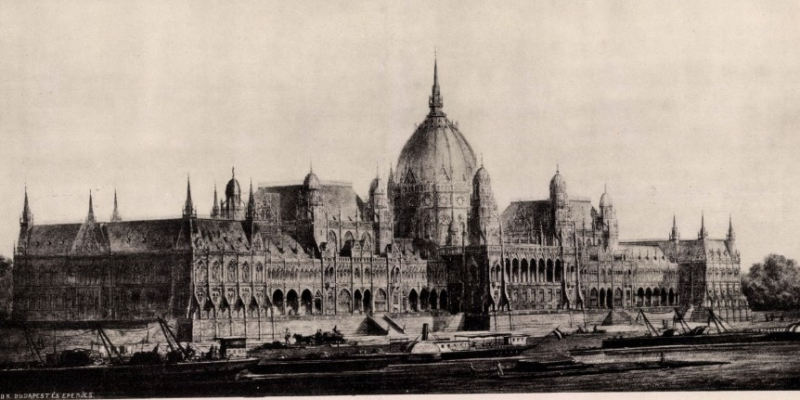
The design submitted by Imre Steindl. The final plans differed significantly from those pictured (Source: Az Építési Ipar, issue 30.12.1883, image appendix of the volume)
Members had been discussing the need for a new parliament building since the 1940s. During the Reform Era of the National Awakening (1825–1848) the national diet met in Pozsony (present-day Bratislava, Slovakia). A resolution was passed in 1843 moving the headquarters of the assembly to Pest. Preparations for the move began, but the events of history intervened. In 1848 the assembly met in the Pest Vigadó, from 1861 sitting were held in the National Museum. In 1965 the lower chamber met in yet another "temporary building", while the upper chamber continued to sit in the National Museum.
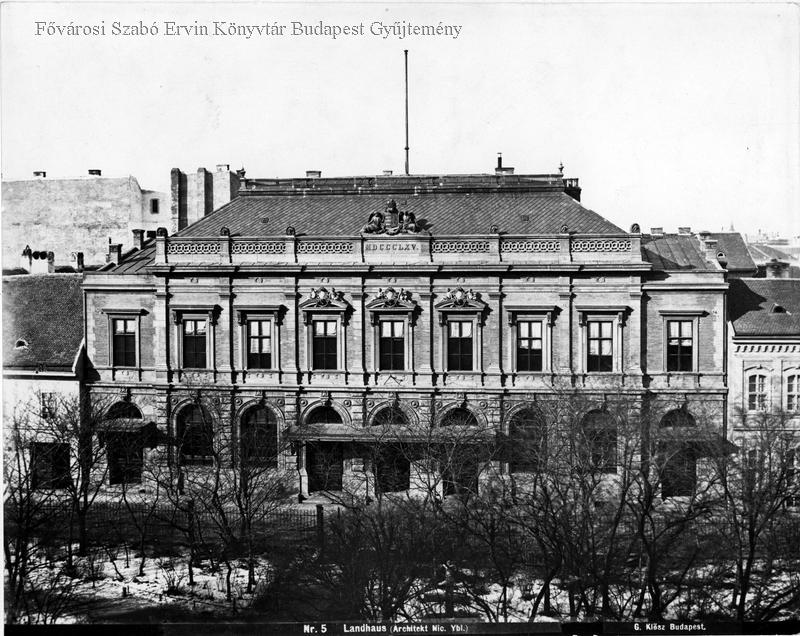
The temporary parliament building was built in 1877 in just a few months based on the plans of Miklós Ybl. It stands on Bródy Sándor Street near the National Museum (Photo: FSZEK Budapest Collection)
The "temporary'" building was constructed in less than six months in 1865 based on plans by Miklós Ybl. It currently houses the Institute of Italian Culture.
Thus, the construction of the Hungarian parliament building, officially House of the National Assembly, began on 12 October 1885 and lasted nearly 20 years. But if Tömő Square was so separated from everything, why was the building placed there? When searching for the right location, the Budapest City Council turned to the Budapest Public Works Council. Officials in the latter recommended Tömő Square.
Naturally, several other locations were also examined: the plot of the Károly Barracks; the plot that today houses the offices of the Budapest local government on the inner ring road; Deák Square; Erzsébet Square. Other options were the vicinity of Bajcsy-Zsilinszky Avenue, and the plot of the Piarist Monastery next to Erzsébet Bridge.
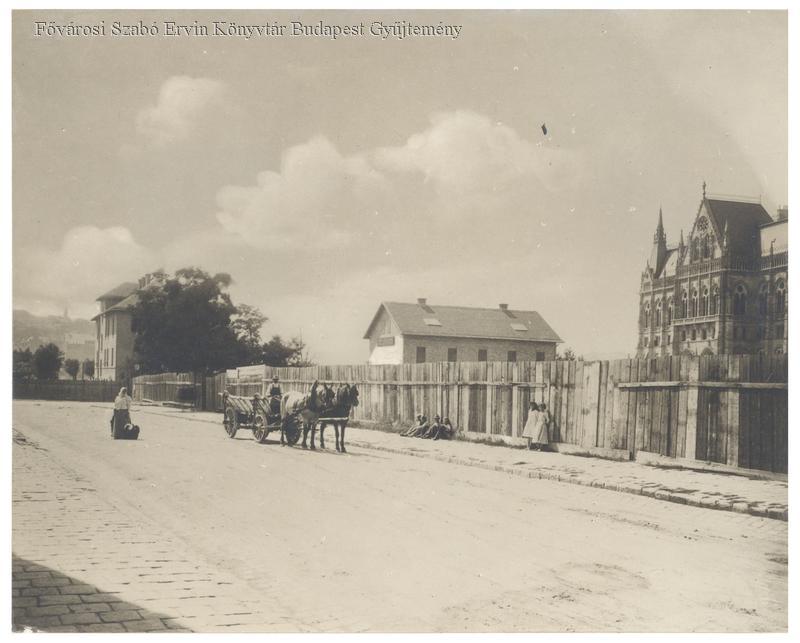
The surroundings of the parliament in 1900 (Photo: FSZEK Budapest Collection)
Tömő Square was chosen for two reasons. The plot was large and owned by the state. All other locations in question were privately owned or in the hands of other organisations. Furthermore, the cheapest of these, the plot of the Piarist Monastery, would ave cost 1,267,300 Forints. Tömő Square, on the other hand, was twice its size and evaluated at only 227,000 Forints.
However, urban planning also played a role. Tömő Square and the southern area of Lipótváros had been designated a site for public offices. Plans were not only to build the parliament here but several ministries.
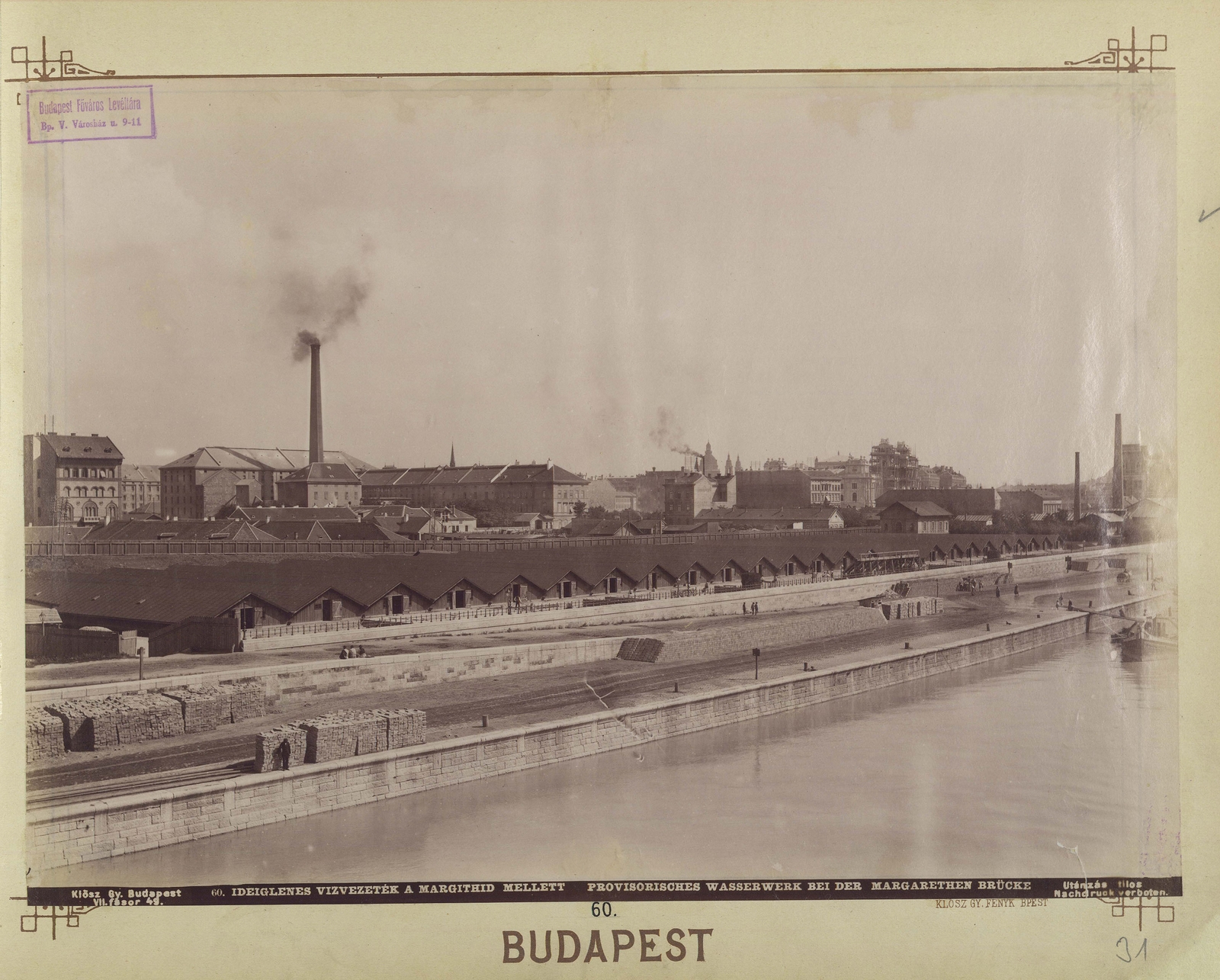
The temporary water pipe south of Margaret Bridge in 1895 (Photo: Photo: Fortepan / Budapest Archives. Reference No.: HU.BFL.XV.19.d.1.07.061)
The construction of the parliament and the building site was enshrined in law. Article 1 of Act LVIII of 1880 reads:
"The construction of a permanent house of the national assembly on Tömő Square in the 5th District of the Capital is hereby ordered."
The explanatory memorandum of the law explains:
"As mentioned above, this plot is unobstructed and bordered by four quiet streets. It has an open view of the Danube and will be bordered by a park on one side, offering peace and fresh air. As a result, the plot meets all the requirements of health and comfort that would support a calm working environment."
The memorandum acknowledged that the area was under-developed. Nevertheless, the government was confident that news of the parliament being built in the area would lead to growth and development in the area, and that the plots owned by the state would increase.
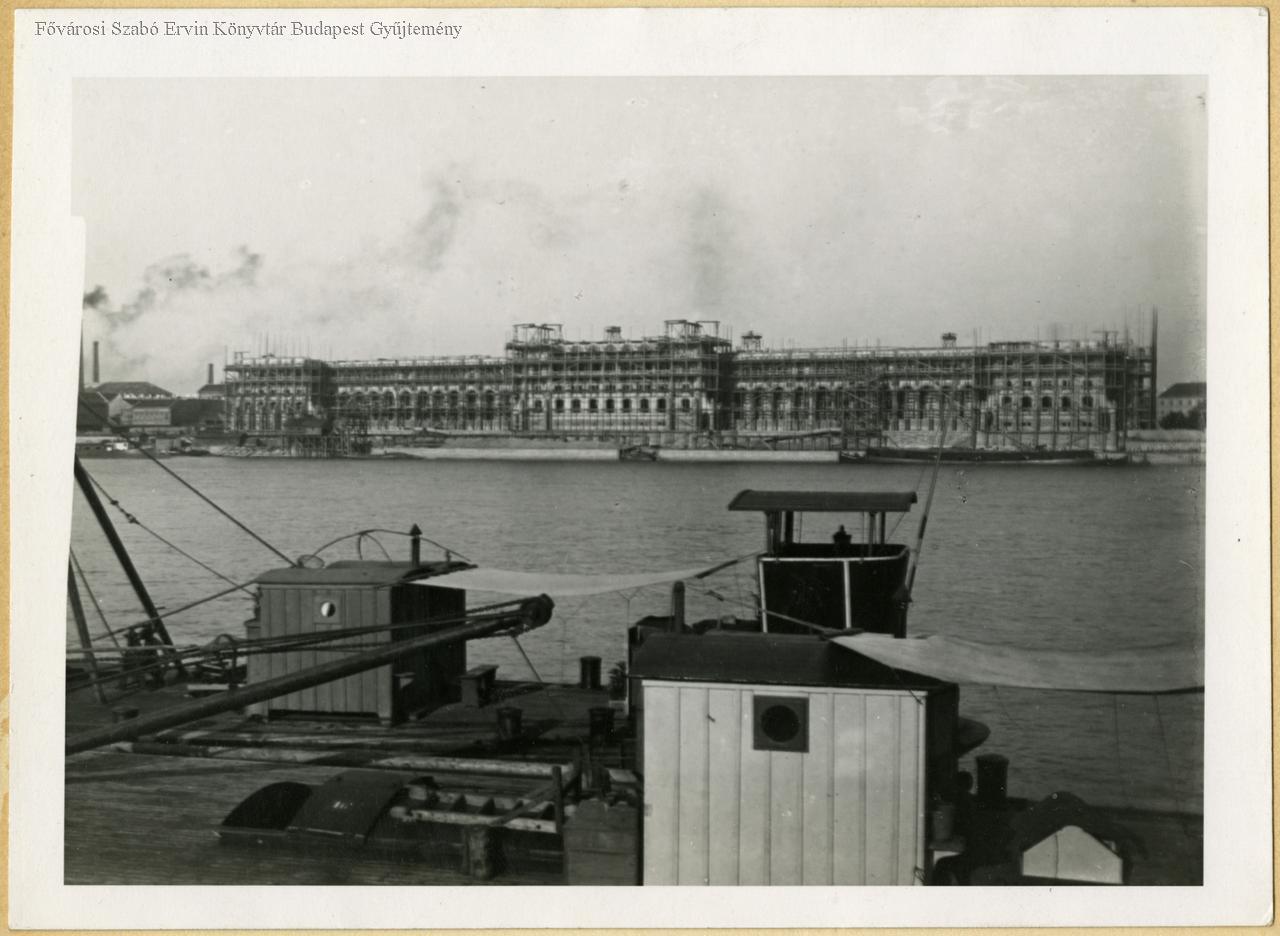 The parliament during construction – factory chimneys visible in the background (Photo: FSZEK Budapest Collection)
The parliament during construction – factory chimneys visible in the background (Photo: FSZEK Budapest Collection)
Thus construction began in this under-developed part of the city. On 12 October 1885 150 workers descended on the square to dig a 40,000-cubic-metre pit for the foundation and basement. In total, 40 million bricks and 30 thousand cubic-meters of paving stones were used during the construction. Natural light reaches hundreds of offices through ten internal courtyards. The façade is reminiscent of Gothic architecture and features ninety statues, a further 152 were added to the interior.
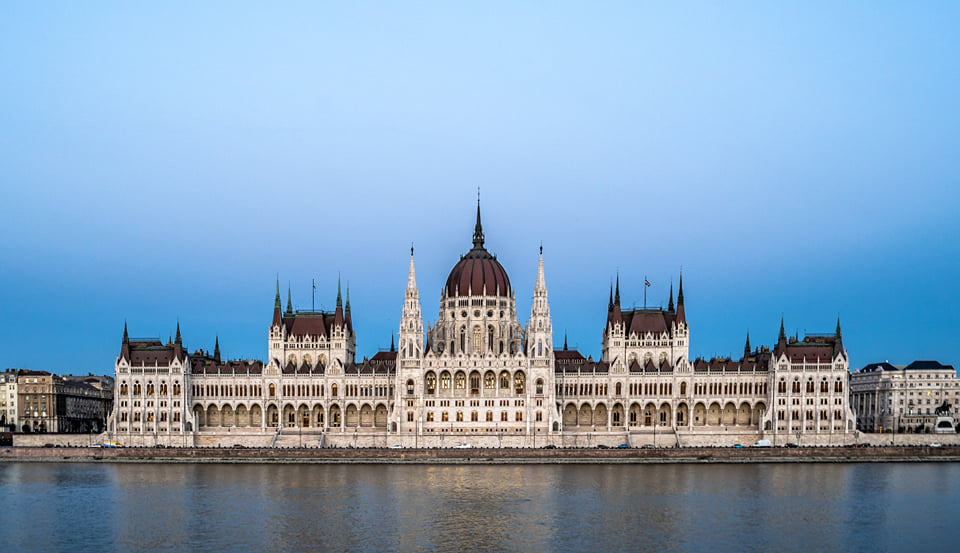 What may be the most beautiful parliamentary building in the world was completed in 20 years (Photo: Balázs Both/pestbuda.hu)
What may be the most beautiful parliamentary building in the world was completed in 20 years (Photo: Balázs Both/pestbuda.hu)
The masterpiece by Imre Steindl is the second-largest parliament in Europe and the third-largest in the world. Its floor area is 18.000 square metres, its length along the Danube 268 metres, while its width reaches 123 metres. The dome soars to 96 meters, the same height of the dome on Saint Stephen's Basilica. A total of 27 ornate entrances provide access, and 13 lifts ease movement in the building.
The lower and upper chambers of parliament moved into the building in 1902. The first sitting was opened on 8 October 1902, with Albert Apponyi serving as speaker. The building's architect, Imre Steindl, had passed away a few weeks earlier.
Cover photo: The parliament from across the Danube (Photo: Balázs Both/pestbuda.hu)

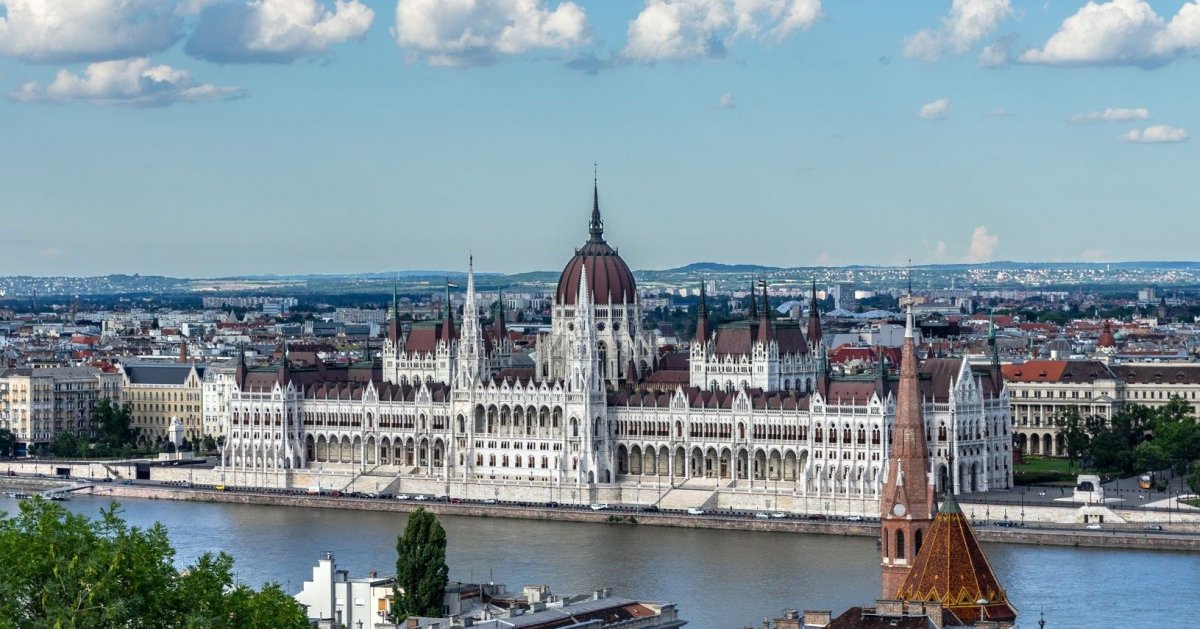






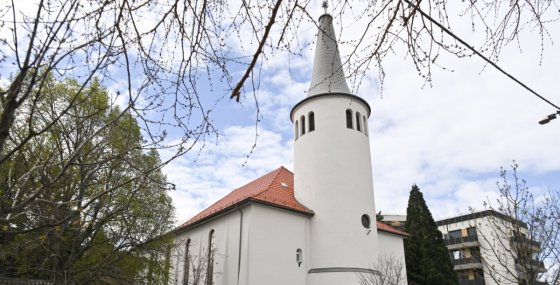




























Hozzászólások
Log in or register to comment!
Login Registration